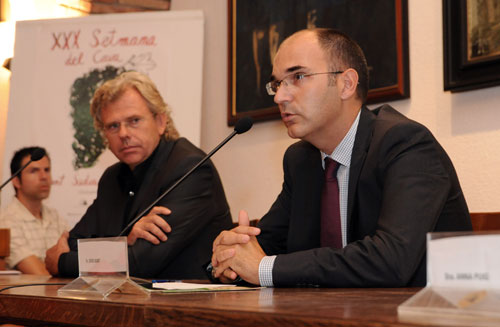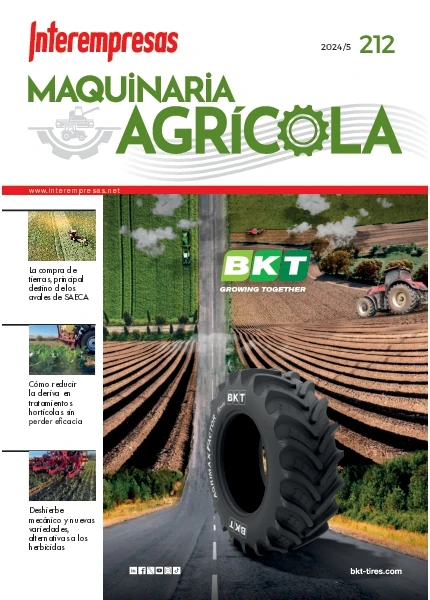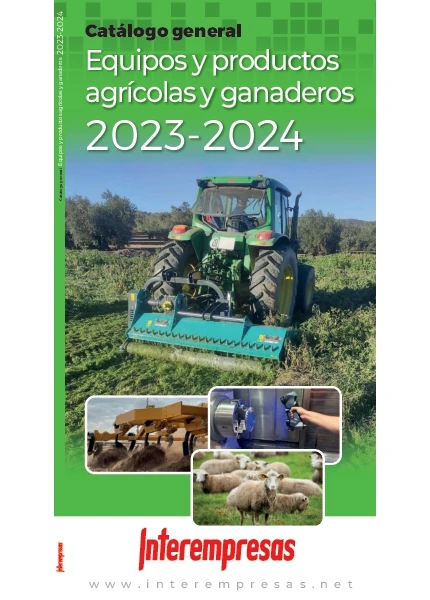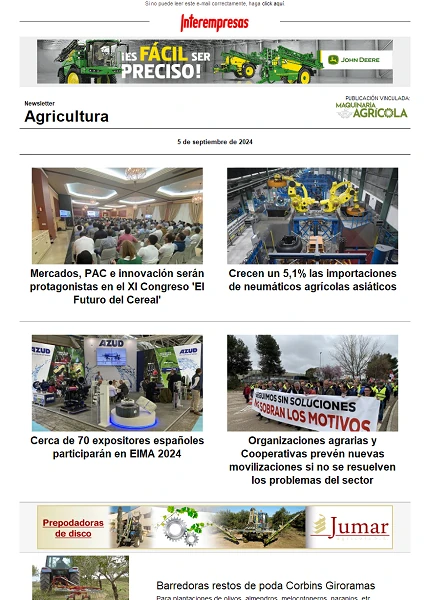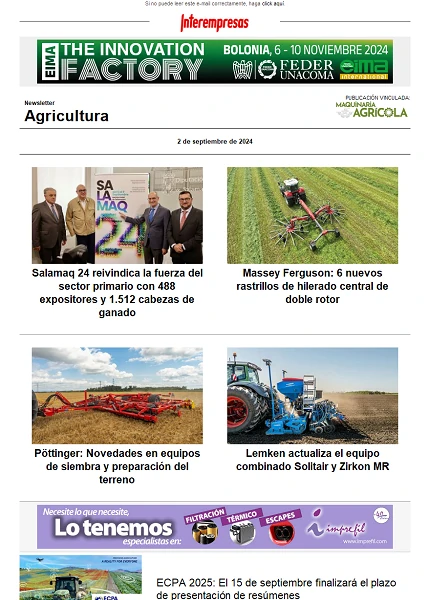The INCAVI shows the first system of inmovilizado of organic and natural yeasts in the XXIX Congrés of the Digs
2 November 2011
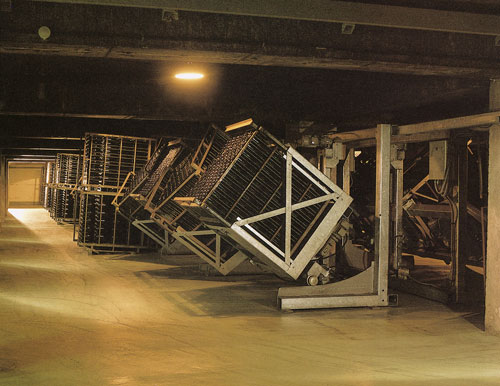
The past 6 October, in the frame of the XXIX Congrés of the Dig, gave to know a new organic system of immobilisation of yeasts, specific for dig, elaborated by the traditional system. It treats of a pioneering innovation in the sector and whose origins trace back to the month of June of the year 2006, in the course of the XXXIX World-wide Congress of the Vineyard and the Wine (OIV), in Logroño. “In that moment, assist to the report of the doctor Juan Carlos García Mauritius, of the department of Microbiology of the University of Córdoba (UCO), where explained and showed images of a new format of immobilisation of yeasts that had developed his group. It treated of some ‘bolitas' small and spherical formed by the coinmovilización natural and spontaneous between a fungus and a yeast, and known like ‘biocápsulas'. Until then, this new system only had applied in the manufacturing of sweet wines and bioetanol to scale experimental”, rememora Anna Puig, researcher of the IRTA-INCAVI and manager of the area of Biotechnology of the Institut Català of the Vinya i the Saw (INCAVI). Later, technicians of this last, very linked to the sector of the dig, thought that this format of immobilisation could use for the second fermentation in bottle, and that it could contribute a series of technical and economic advantages in the stage of stirred up and aclareo of this wine espumoso, according to Puig.
The first proofs in dig carried out during the second year of the project
The idea, as it explains the manager of Biotechnology of the INCAVI, arose in Logroño, where attracted the interest of the two groups of investigation involved. Even so, they needed a source of financials. Some months afterwards, in the trascurso of a meeting summoned in Vilafranca of the Penedès, reflected the idea by means of a project of investigation coordinated by both groups IRTA-INCAVI and the UCO, presenting in the announcement of the National Plan of R&D 2008-2011 of the Ministry of Science and Innovation – INIA (National Institute of Investigation and Agricultural and Alimentary Technology). A big number of companies and institutions related with the sector of the digs supported said project, approved and subsidised from June of the year 2008 (reference RTA2008-00056-C02-01 and 02).
From here, initiated the experimental phase. A group of researchers of the University of Córdoba (UCO), in which they participated four researchers of the departments of Microbiology and of Agricultural Chemistry and Edaphology, studied the ideal conditions of training of the biocápsulas and the stability in fermentation of said inmovilizados. Once established the protocol of training, adopted by four researchers of the
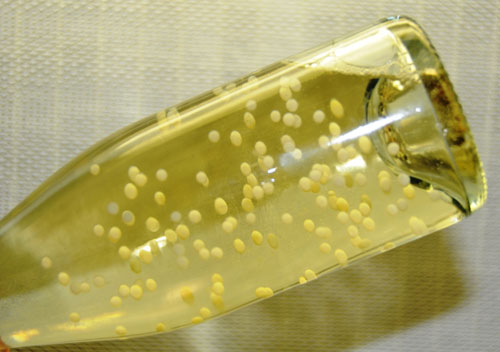
The first tirajes of digs did not take place until principles of the second year of project. Like this it remembers it the researcher of the IRTA-INCAVI: “it Was the first time that entered the biocápsulas inside a bottle of dig and desconocía if they would be viable regarding fermenting all the available sugars or would hold the pressesure created in his interior (upper to 5 atmospheres) without breaking neither free cells to the outside. Of each batch, along the fermentation and during the crianza, registered the speed of the second fermentation, the speeds of sedimentación of the biocápsulas in the neck of the bottle and the appearance of these inmovilizados inside the container”. After a period from among nueve and ten months of crianza, some of the bottles of each batch happened to the stage of aclareo and degüelle. “The first dig resultant –continue– analysed from the point of view enológico and organoléptico. The analyses repeated to the 15 months of crianza, considering the product like reservation. Until the moment, the results are satisfactory and the evolution of the digs during his aging goes to control, of periodic form”.
In concrete, the traditional system of preparation of wine espumoso in which it realises/realizes the second alcoholic fermentation, in the interior of a bottle herméticamente enclosed, carries out mostly with yeasts in shape of free cells. Finalised/Finalized this phase of fermentation and after a period of crianza or statutory minimum aging of nine months that establishes the Regulatory Council of the Dig, the rests of yeasts have to delete of the bottle. “To facilitate this phase of aclareo or stirred up usually, in the moment of the tiraje, together with the yeasts adds bentonite, an agent clarificante that helps to precipitate and concentrate the cellular rests of the yeasts in the neck of the bottle for his elimination in the phase of degüelle. The disappearance of wrap them in the phase of aclareo also known with the French name of ‘remuage' (stirred up) carries out of traditional way in desks or in systems automated like the giropalés”, details the researcher.
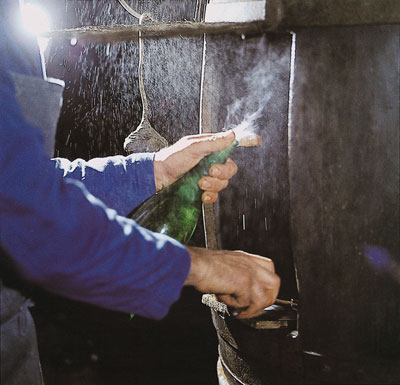
Degüelle Of a bottle of digs. Photo: Regulatory Council of the Digs.
The discovery would substitute to the machines girapalés and to the traditional desks in the stirred up of the bottles
The process of stirred up of the bottles, by means of girapalés and/or desks, is “effective”, in opinion of the researcher of the INCAVI, although it also demands time, important physical space in the cellar and economic investment. To do an idea, the phase of stirred up hard between four and five days if to such effect use giropalés, and until a week if it employs the traditional system of desks. In this sense, the project of the INCAVI gathers a series of advantages, concerning the previous systems: “The industrial utilisation/utilization of yeasts inmovilizadas for the second fermentation by the traditional method can reduce and simplify the stage of stirred up and the process of degüelle. In the case of the biocápsulas, has checked that the spheres sedimentan in the neck of the bottle in less than two minutes in the majority of the cases tested”, matiza Puig./p>
From does time, in the market coexisten systems of immobilisation of yeasts for the manufacturing of wine espumoso. Some bibliographic sources ensure that the employment of yeasts inmovilizadas reduces the requests of space in digs at least to the half and diminishes the cost of the stage of stirred up in 80%, as it affirms the manager of Biotechnology of the INCAVI. This does not remove that the use of biocápsulas like method of immobilisation was innovative: “it treats of a totally organic system and natural. The union of the yeasts with the fungus that acts of support is a no forced process, by what the catalytic activity of the yeasts does not suffer any type of alteration. The time of fermentation does not result affected: they do not exist significant differences between using free yeasts or inmovilizadas”.
Besides, the fact of not having to use bentonite to facilitate the aclareo does that the quality of the foam do not see affected, definitely another of the advantages of this method that promises, between other things, prescindir of the material that needs for the phase of stirred up and that occupies too space in dig them, cancel almost all the phase of aclareo, reduce partially the time of preparation of the dig and accelerate the commercial dynamics of the product, if like this it wishes . “This can be useful in the case of dig young. Nevertheless, it depends on each company or cellar the want to use yeasts inmovilizadas or no”. /p>
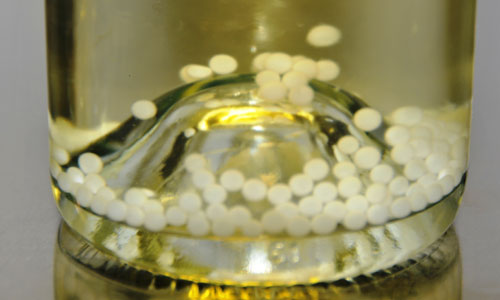
A study in initial phase, waiting for results organolépticos in dig of crianza long
As it gave to know in the transcurso of the XXIX Congrés of the Dig, this study still finds in initial phase, although already they have appreciated positive results in dig young. Now, according to the researcher of the INCAVI, are expecting of the results that obtain in products whose process of crianza was longer. The question would be to determine if the biocápsulas influence or no in the characteristic organolépticas of these dig. “The sector of the digs launches products of very good quality with periods of crianza long or very long, many times upper to the 30 months established for the big ‘denomination reservation'. During this aging, the metabolites or substances of the autolisis of the yeasts (nitrogenous fraction, manoproteínas and polysaccharides) derived of the contact with wrap them exert an important influence on the characteristic organolépticas of the final product”. “The use of biocápsulas with yeasts inmovilizadas in his interior –puntualiza–comports to that this crianza on wrap them do not take place of the same form, with what desconocemos still that repercussion, positive or negative, will be able to have on the wine espumoso elaborated”.
To the question of what would do fault, especially in terms of investment, so that this system applied to scale industrial, the doctor Puig recognises/recognizes that still they have to perfect some appearances of his production (design of a system automated that it allow to obtain greater number of biocápsulas and more homogéneas) and manipulation (obtaining of biocápsulas dehydrated). “This investment in cellars still can not calculate. Nevertheless, if it has bet by a system of immobilisation/immobilization of yeasts whose purpose is to diminish the cost of production of the dig or wine espumoso, the investment for his application, by coherence, will have to be profitable for the company that decide it implant”./p>
Under the lemma ‘The terroir of the dig és viu' (The terroir of the digs is alive), celebrated the XXIX Congrés of the Dig, in the House of the Digs situated in Subirats (Catalonia) and headquarters of the Confrerie of the Digs of Sant Sadurní d'Anoia. In this occasion, this annual event had an influx of almost 200 people, between students of oenology and professionals vinícolas, the past 6 October.
Beside the report on the system of inmovilizado of organic yeasts through biocápsulas, to charge of the manager of the area of Biotechnology of the INCAVI, took place other interventions. Between the acts programmed, analysed also the last technical advances in the control of the quality of the grape. Fernando Zamora, chair of the Faculty of Oenology of Tarragona in the University Rovira i Virgili, the one who tackled the virtues and repercussion of the use of biosensores in the cellars. In concrete, centred his intervention in the study realizar by the University Rovira i Virgili, that analyses the method Biolan to control, by means of biosensores, parameters like the acid glucónico that take part in the health of the grape and in the quality of the wines.
Remarkable was also the participation of Lydia and Claude Bourguignon, directors of LAMS (Laboratoire d'Analyse Microbiologique give Sols) on ‘Agrology. The terroir of the digs is alive: tipicidad of some terroirs of dig'. The Agrology, axis around the cual turns the Congress, understands like the relations between the floor, the microorganisms, the fauna and the plant. A tendency that deepens in the terroir, and that does not limit to take samples or study the dynamics of the floor. The contest clausuró of hands of Jordi Bort, general director of the INCAVI.
